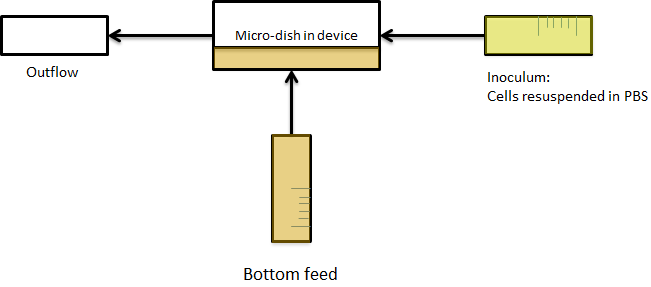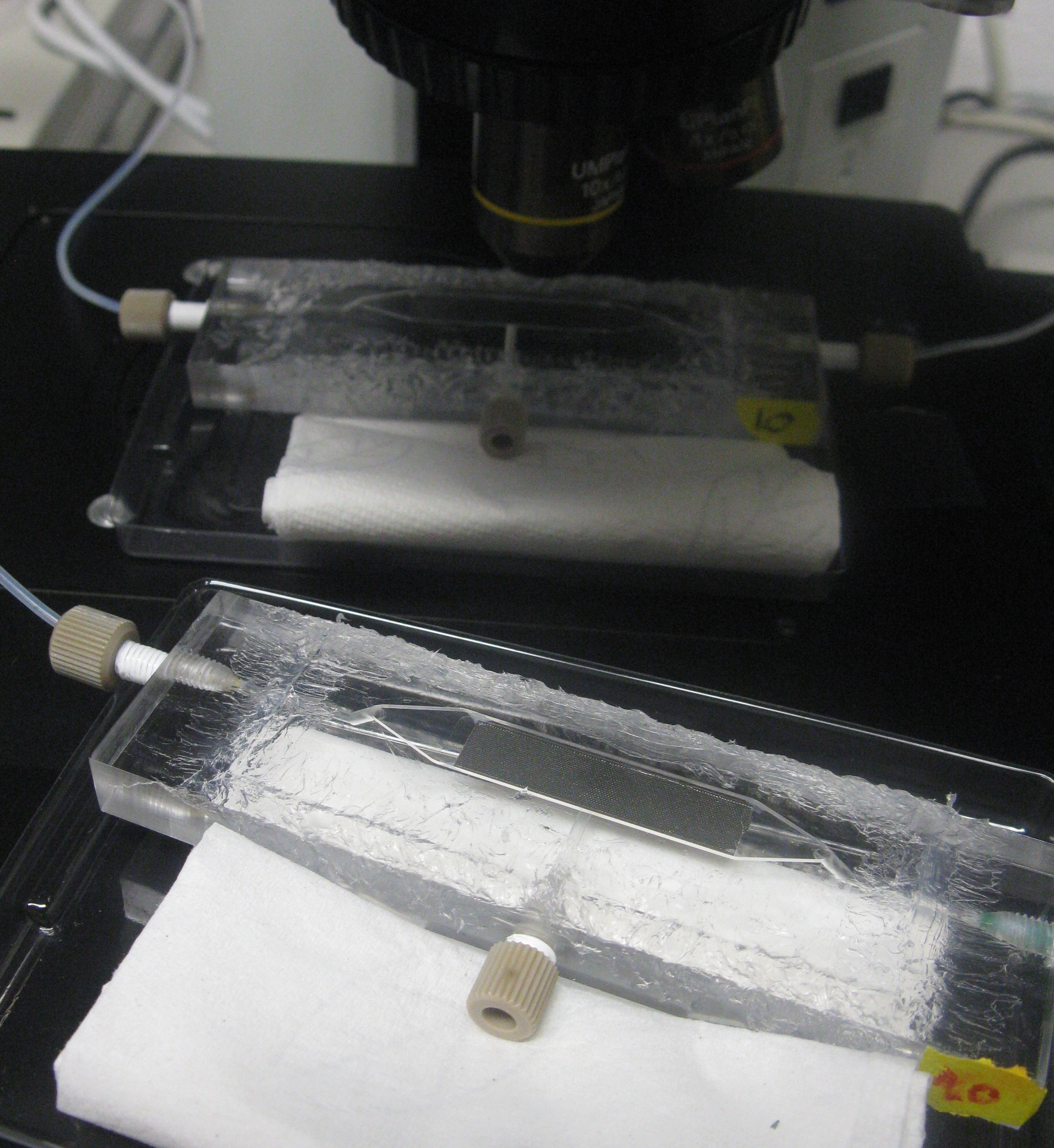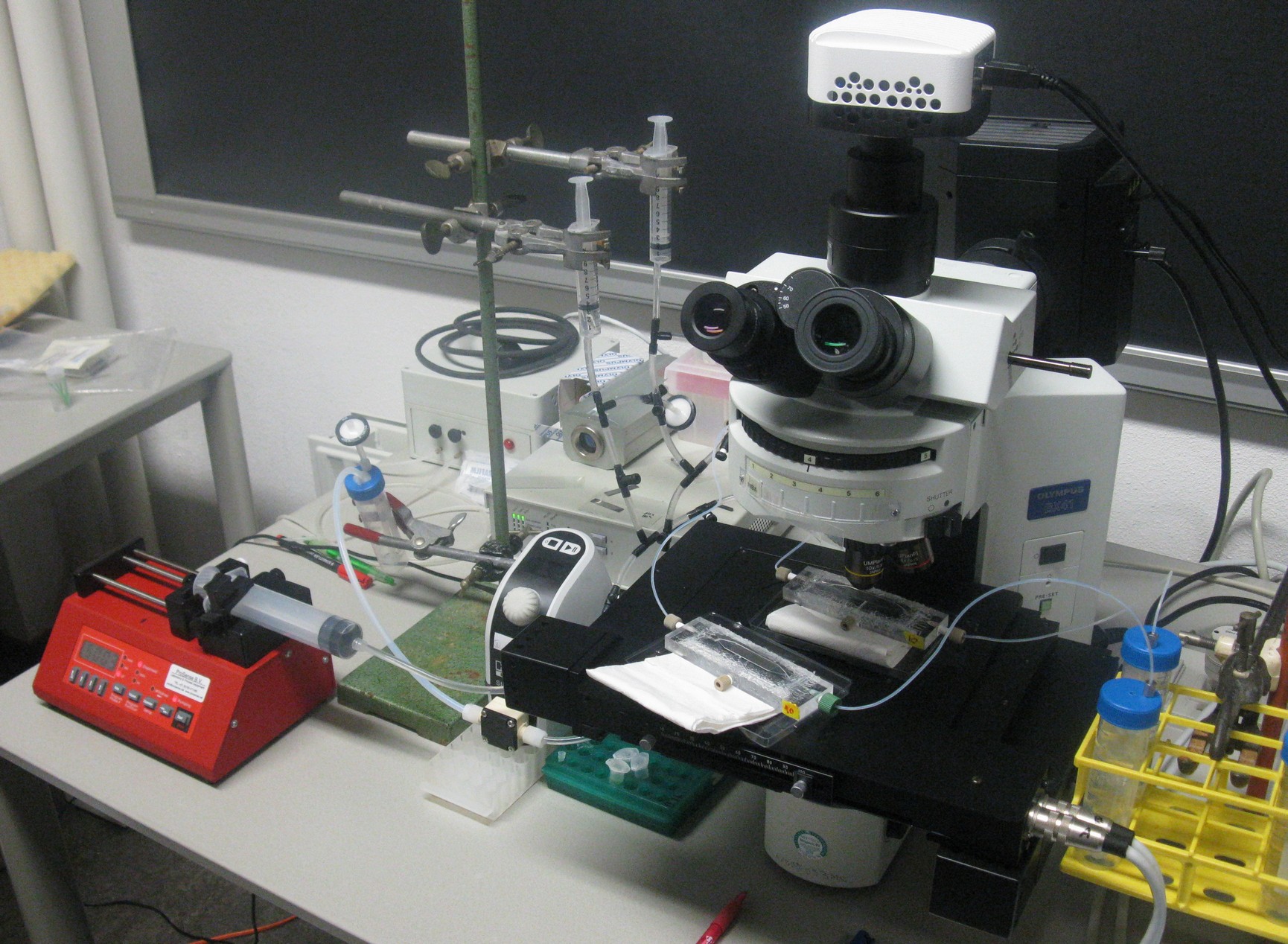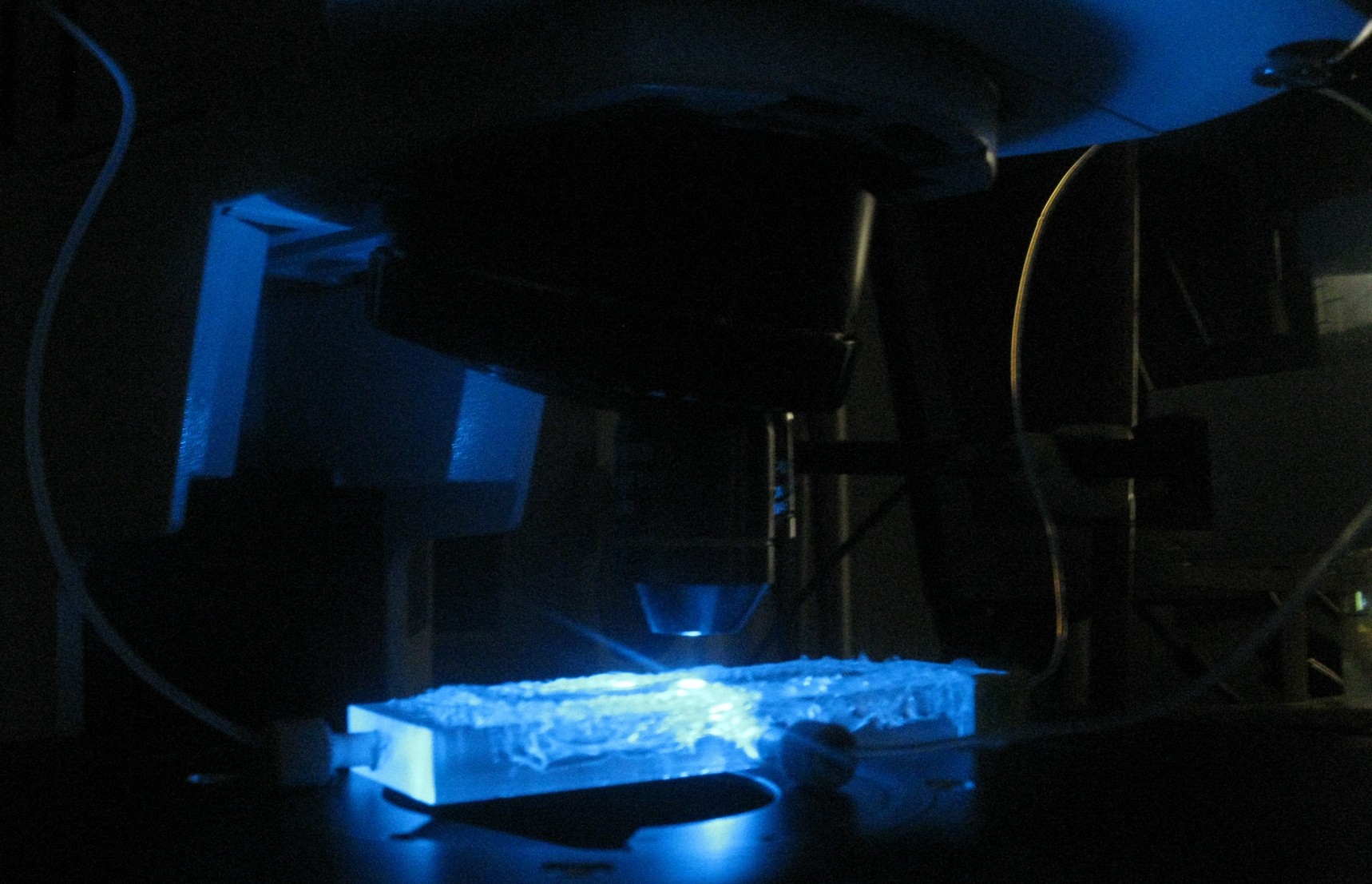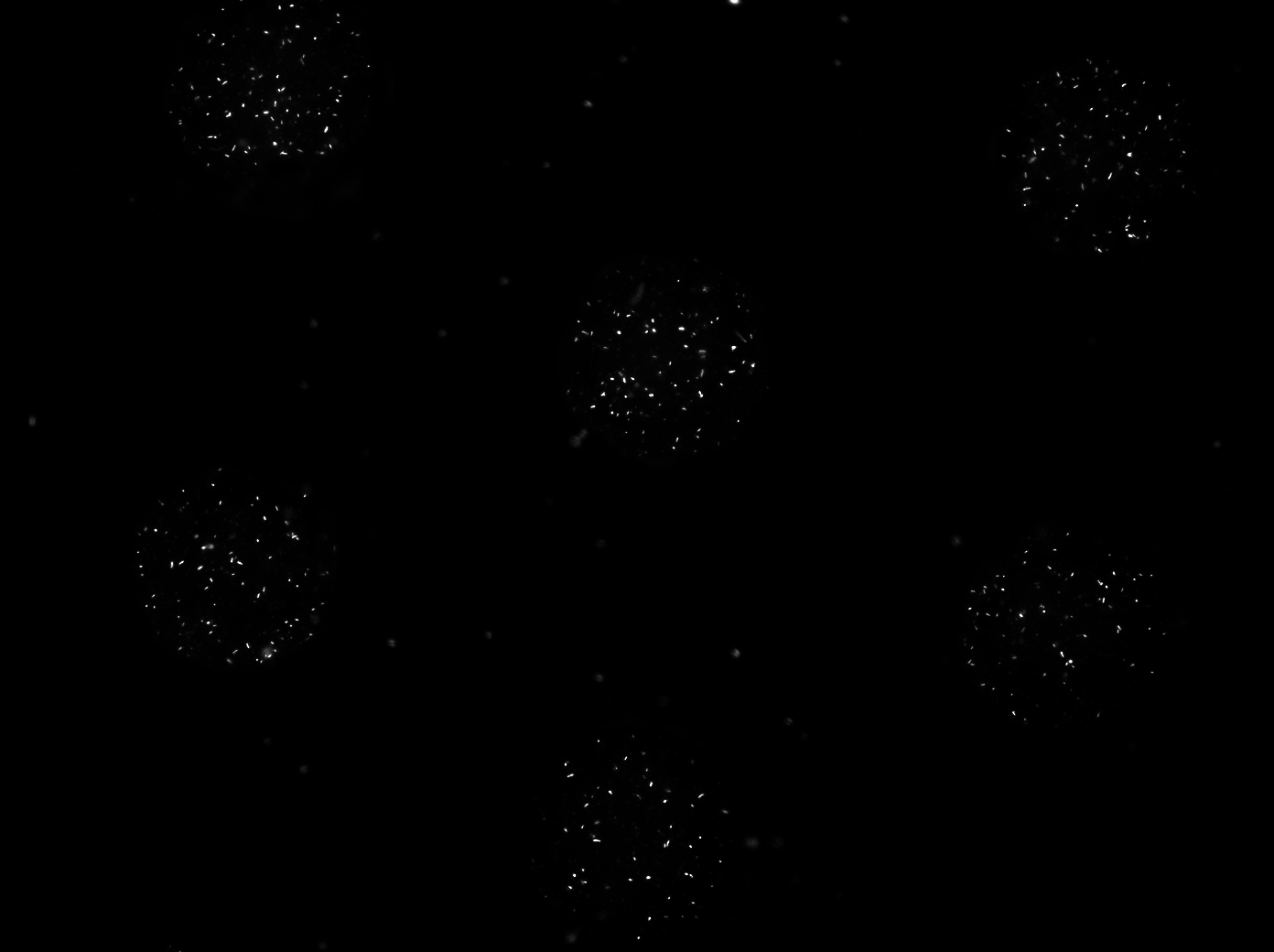Team:Wageningen UR/Project/DevicesSetup
From 2011.igem.org
RubenvanHeck (Talk | contribs) m (→Custom fluidic device designed by Team Wageningen UR to measure oscillations) |
RubenvanHeck (Talk | contribs) m (→Custom fluidic device designed by Team Wageningen UR to measure oscillations) |
||
| Line 32: | Line 32: | ||
[[File:Micro-sieve_device_WUR.png|270px|center]] | [[File:Micro-sieve_device_WUR.png|270px|center]] | ||
| - | '''Fig.2:'''This setup imposes the problem that the diffusion of AHL is much slower than the flow rate over the sieve. Therefore, the AHL produced will always be flushed away before a uniform concentration can be established over the whole cell culture, thus preventing any synchronized behavior to arise. The use of a microsieve in the course of our iGEM project was therefore discarded. | + | '''Fig.2:''' This setup imposes the problem that the diffusion of AHL is much slower than the flow rate over the sieve. Therefore, the AHL produced will always be flushed away before a uniform concentration can be established over the whole cell culture, thus preventing any synchronized behavior to arise. The use of a microsieve in the course of our iGEM project was therefore discarded. |
The problem described above does not arise when using the microdish. In the 40 micron deep wells the cells can be trapped and AHL will have a better chance to establish a uniform concentration throughout the well. This will create a higher chance of synchronized oscillatory behavior of the cells growing in a well. Special care has to be taken with the velocities of the fluid flowing over the wells: If the flow rate is too high, the cells will be spilled out of the wells. This behavior was observed under the microscope. | The problem described above does not arise when using the microdish. In the 40 micron deep wells the cells can be trapped and AHL will have a better chance to establish a uniform concentration throughout the well. This will create a higher chance of synchronized oscillatory behavior of the cells growing in a well. Special care has to be taken with the velocities of the fluid flowing over the wells: If the flow rate is too high, the cells will be spilled out of the wells. This behavior was observed under the microscope. | ||
| Line 38: | Line 38: | ||
[[File:Micro-dish1_device_WUR.png|290px]] [[File:Flushingoutofwells_WUR.gif|300px|right]] | [[File:Micro-dish1_device_WUR.png|290px]] [[File:Flushingoutofwells_WUR.gif|300px|right]] | ||
| - | '''Fig.3''' | + | '''Fig.3''' '''Fig.4''' |
| - | + | ||
| Line 49: | Line 48: | ||
[[File:Micro-dish2_device_WUR.png|200px]] [[File:Bottom_feed_WUR.png|500px|right]] | [[File:Micro-dish2_device_WUR.png|200px]] [[File:Bottom_feed_WUR.png|500px|right]] | ||
| - | '''Fig.5''' | + | '''Fig.5 (Top)''' |
| - | + | '''''Fig.6 (Right)''' Applying bottom feeding to keep the cells in the wells alive'' | |
| Line 100: | Line 99: | ||
[[File:ptetGFP_PBS.jpg|350px]] [[File:ptetGFP_PBSremoved.jpg|350px|right]] | [[File:ptetGFP_PBS.jpg|350px]] [[File:ptetGFP_PBSremoved.jpg|350px|right]] | ||
| - | '''Fig.10''' ‘’Before addition of | + | '''Fig.10 (Left)''' ‘’Before addition of PBS'' |
| - | + | '''Fig.11 (Right)''' ‘’After removal of PBS’’ | |
For the experiment depicted above, the PBS was removed before all the cells died. The procedure varied depending on how well the bacteria grew in the wells. They were left to grow in the device for an additional night and the measurements were then taken in an 10 minute interval during the next day. This was done for two reasons: for one the chamber had to be completely dried out before measurements could be taken, otherwise the remaining liquid would condense through the heat of the light and blur the pictures. The second reason was that - as mentioned before - [[Team:Wageningen_UR/Project/ModelingProj1#Conclusions_for_our_system| our modeling]] suggested that - when applying no flow - the oscillations would only occur when starting with a high cell density. | For the experiment depicted above, the PBS was removed before all the cells died. The procedure varied depending on how well the bacteria grew in the wells. They were left to grow in the device for an additional night and the measurements were then taken in an 10 minute interval during the next day. This was done for two reasons: for one the chamber had to be completely dried out before measurements could be taken, otherwise the remaining liquid would condense through the heat of the light and blur the pictures. The second reason was that - as mentioned before - [[Team:Wageningen_UR/Project/ModelingProj1#Conclusions_for_our_system| our modeling]] suggested that - when applying no flow - the oscillations would only occur when starting with a high cell density. | ||
Revision as of 19:36, 20 September 2011
 "
"








